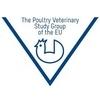Explore all the information on
Poultry vaccines
Disease prevention by vaccination is an integral part of flock health management protocols. Active immunization using live vaccines is the current industry standard. Routinely used vaccines in chickens include MDV, NDV, IBV, and IBDV, and in turkeys NDV and HEV. Newer vaccines, including molecular recombinants in which genes of immunogenic proteins from infectious agents are inserted into a live viral vector, are also being examined for commercial use. Efforts are under way to enhance vaccine efficacy by the use of adjuvants, particularly cytokines. The vaccine delivery systems include in ovo injection, aerosol, spray, drinking water, eye drop, and wing web injection. The in ovo vaccination procedure is relatively new and at the present time it is used primarily to vaccinate broiler chickens against MDV. Birds respond to vaccines by developing humoral and cellular immune responses. There are two main types of vaccine available for poultry: live or killed.
Tim Johnson (University of Minnesota) talks in depth about E. coli and Lactobacillus, during the Symposium on Gut Health in St. Louis, USA....
Comments : 0
Recommendations: 1
Dear colleagues, I would like to ask you if some of you have experience with Mycoplasma gallisepticum field strain and ts-11 vaccine DIVA PCR tests? I found Kylt DIVA from Anicon (Germany) but the setup of the kit does not allow the detection of double "infection". i.e. if the sample would be positive for both strains (field + ts-11) there is no chance for me to distinguish between them. Any information would be appreciated. Many thanks, Kristina. ...
Comments : 4
Recommendations: 0
...
Comments : 0
Recommendations: 0
A medium sized broiler day old chick supplier into the Indonesian market, P.T. Peternakan Ayam Manggis, use Cobb 500 grandparent stock and have a production base of about 800,000 parent stock. They also have Hisex layer breeders and sell day old layers. Over the last decade, since switching to Cobb for broilers, they have been improving performance with investments in feed milling and other sectors of production but performance was still below expected and the appearance of clinical...
Comments : 5
Recommendations: 2
The only global meeting entirely devoted to avian and poultry immunology, this three-day conference highlights the latest research and provides a forum for discussion where we'll exchange ideas, strengthen partnerships and establish new collaborations. The conference is co-hosted by the University of Delaware and the University of Georgia.
XVI Avian Immunology Research Group Meeting
...
Comments : 0
Recommendations: 0
Infectious laryngotracheitis (ILT), caused by Gallid herpesvirus type 1, is a highly contagious upper respiratory and conjunctival disease of poultry. The virus (ILTV) is thought to exit the host in respiratory aerosols and enter by inhalation of these. High levels of ILTV DNA have been detected in excreta, dust, blood or plasma and in various organs outside the respiratory tract; raising the possibility of alternative routes of shedding from the host. However, it is not known whether the...
Comments : 0
Recommendations: 0
Introduction Coccidiosis caused by the apicomplexan protozoan of genus Eimeria (E) is a common and costly diseases associated with poultry production across the world. 1,2 There are several species of chicken coccidia, i.e., E. maxima, E. mitis, E. necatrix, E. praecox E. tenella, E. acervulina, E. hagani, E. mivati and E. brunetti. Among the listed species, E. maxima, E. tenella, and E. acervulina are the most common species. 3-5 The spread of the disease is...
Comments : 0
Recommendations: 0
BACKGROUND Poultry ( Gallus domesticus ) farming is one of the major sources of protein and means of food security for growing population throughout the world (1). Around 75 million broiler chickens are reared annually as a source of meat in Nepal, and the industry has rapidly grown in the recent years (2). The present population of laying hens is more than 7 million, the meat produced from poultry exceeds over 17 thousand metric tons, and the egg production from laying...
Comments : 0
Recommendations: 0
INTRODUCTION The poultry industry is one of the main suppliers of animal protein worldwide, contributing both meat and eggs (1, 2). This is an industry in constant growth, as demonstrated by the United States Department of Agriculture (USDA). The USDA reported that 102.9 million tons of chicken meat were produced in January of 2020, which represents a 3.9% increase compared to the same period of the previous year (3). This increase is important, given that by 2050 the human...
Comments : 0
Recommendations: 0
INTRODUCTION Genetic selection for higher growth rate, and providing balanced diet and superior health care measures led to a higher body weight in commercial broilers. The birds that are being reared in open-sided poultry houses may lead to stress due to constant dynamic variations in temperature and humidity in the environment, which causes adverse effects on performance (Niu et al., 2009), meat quality and immune responses (Thompson and Scott, 1970). Further, heat causes a...
Comments : 0
Recommendations: 0
INTRODUCTION Coccidiosis remains one of the most significant diseases affecting poultry production globally. It is well-recognized that infection with Eimeria parasites occurs in every location where chickens are raised and these infections influence growth, feed efficiency, mortality and the susceptibility to other diseases. As a result, the economic impact of coccidiosis is likely greater than any other disease affecting poultry production, with a recent global estimate of...
Comments : 0
Recommendations: 0
...
Comments : 3
Recommendations: 0
Dr. Stephen Adejoro (Livestock Industry Foundation for Africa) shares with Engormix members his comments on this usual problem in raw materials and its consequences on vaccination, health and performance....
Comments : 1
Recommendations: 3
For a long time antibiotics have been used in poultry and egg production but there is considerable consumer/regulatory pressure, price pressure and technical reasons why the administration of antibiotics on a routine basis needs to be phased out of these production systems. The development of resistance in target and non-target organisms is just one reason. For exporting companies we may see trade barriers erected to products that have been produced with antibiotics to prevent spread...
Comments : 1
Recommendations: 1
1. Introduction Among viral diseases affecting poultry production Newcastle disease (ND) is one of the most common and serious one [1]. It is caused by viruses of genus Orthoavulavirus, Avian orthoavulavirus 1 species [2] formerly designated as Avian avulavirus 1, that are commonly known as Avian paramyxovirus 1 (APMV 1) or Newcastle disease viruses (NDV). The virulent forms of NDV cause a devastating disease of poultry throughout Asia, Africa, the Middle East, and Central and...
Comments : 0
Recommendations: 0
Can anyone tell me when chickens/chooks can be vaccinated? If laying pullets is it too late? And what old for chickens? Is 10-14 wk too late? I heard that the vaccination can have negative side effects such as growth retardation? Thanks ...
Comments : 1
Recommendations: 1
Dr. Stephen Adejoro (Livestock Industry Foundation for Africa) shares with Engormix members his thoughts on how to prevent an outbreak in developing countries....
Comments : 0
Recommendations: 2
1. Introduction Mycoplasma synoviae (MS) and Mycoplasma gallisepticum (MG) are the most important Mycoplasma species for commercial poultry in Mexico. For decades, these species have been recognized as the cause of chronic respiratory disease (CRD) [1–3]. In addition, they decrease the fertile egg production in broiler breeders, cause late-stage embryonic death, or result in the births of infected chicks that later develop CRD. This disease suppresses the innate...
Comments : 1
Recommendations: 0
Background: FAdVs are widely distributed, and some species are associated with important poultry diseases, representing current threats of serious economic losses for the aviculture industry. Some of the diseases include the Inclusion body hepatitis (IBH) related with FAdV-C and D infections, hepatitis-hydropericardium syndrome (HHS) related with FAdV-C infections [1,2], gizzard erosion (GE) related with FAdV-A infections [3-6] among others. The family Adenoviridae is divided...
Comments : 0
Recommendations: 0














.jpg&w=3840&q=75)





















